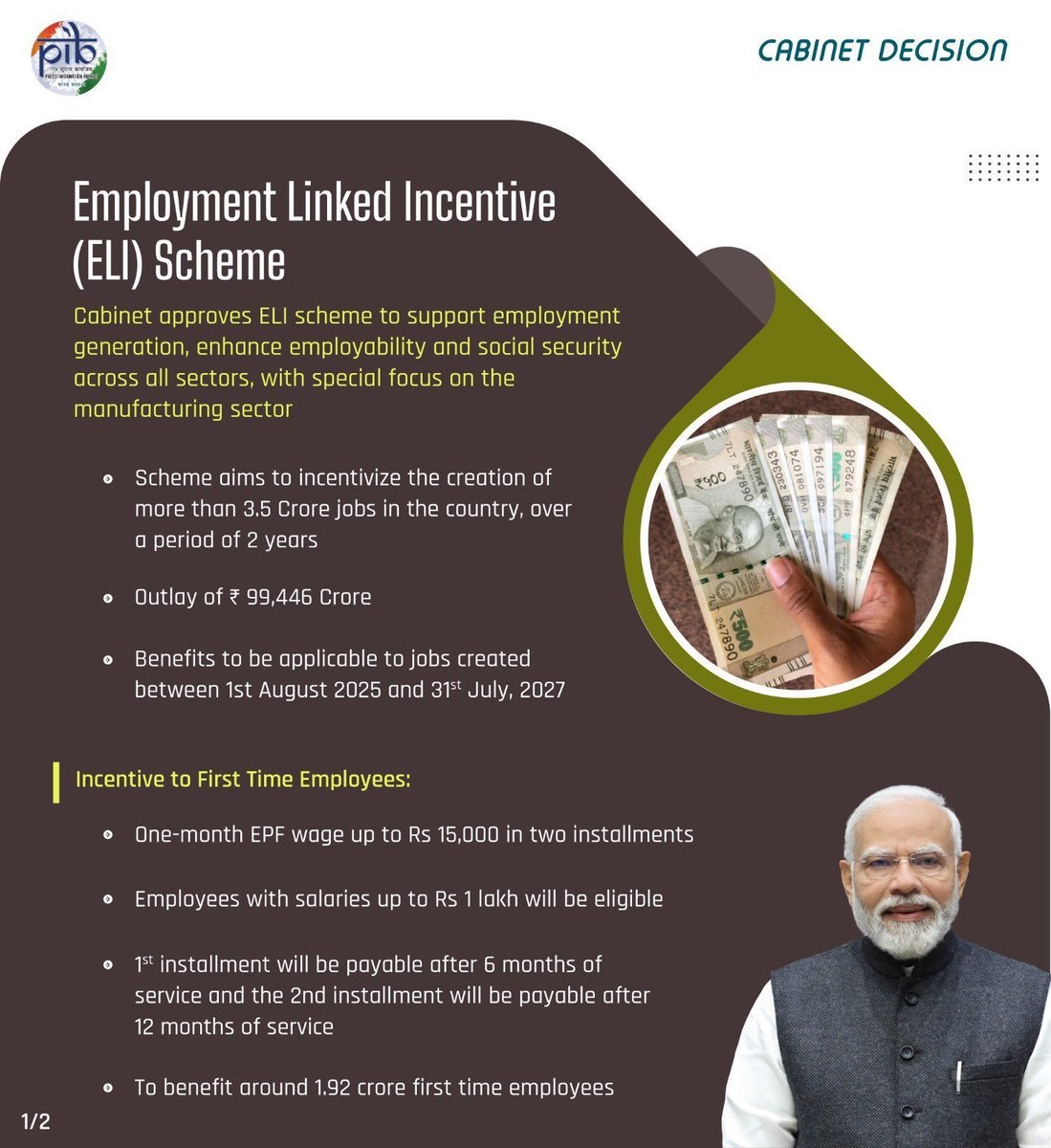Employment-Linked Incentive (ELI) Scheme

- 07 Jul 2025
In News:
The Government of India has approved the Employment-Linked Incentive (ELI) Scheme with an outlay of ?99,446 crore, aimed at promoting formal employment generation, particularly in the manufacturing sector. Announced in the 2024–25 Union Budget, the scheme is part of a broader employment strategy that includes internships, skill development, and youth engagement initiatives.
Key Features of the Scheme
The ELI scheme, operational from August 1, 2025 to July 31, 2027, targets the creation of over 3.5 crore jobs. Of these, 1.92 crore newly employed individuals are expected to benefit directly. It is being implemented through the Employees Provident Fund Organisation (EPFO).
For eligible new recruits earning up to ?1 lakh/month:
- EPFO will transfer one month’s EPF wage (up to ?15,000) in two instalments—after 6 and 12 months of continuous service.
- Part of the incentive will be deposited in a fixed savings instrument, withdrawable later by the employee.
Incentives for employers include:
- ?3,000 per employee/month for two years for each new employee retained for at least six months.
- For the manufacturing sector, this benefit may extend into the third and fourth years.
Who Benefits?
The scheme primarily benefits:
- New entrants into the formal labour market.
- Labour-intensive sectors, especially manufacturing.
- Employers incentivized to sustain job creation.
- Small businesses, if implementation is expanded inclusively.
Industry Response
The industry has largely welcomed the initiative. According to FICCI’s former president, it is an “innovative” step that rewards both employees and employers. The Confederation of Indian Industry (CII) noted its potential to reshape India’s employment architecture.
However, Laghu Udyog Bharati, representing micro and small businesses, emphasized the need to include units with less than 20 employees, which dominate India’s enterprise landscape. Entrepreneurs’ associations also called for simplified and direct reimbursement models linked to verified payroll data, particularly under the MSME Ministry.
Trade Union Perspectives
While the Bharatiya Mazdoor Sangh (BMS) cautiously endorsed the scheme, other central trade unions criticized it for allegedly favoring corporates. They compared it to the Production-Linked Incentive (PLI) Scheme of 2020, where funds reportedly failed to create jobs and ended up benefiting large firms. Unions have demanded expansion of social security coverage and improved quality of employment, rather than subsidizing private sector wage bills.
Concerns and Challenges
Key concerns include:
- The role of EPFO, traditionally a custodian of worker savings, now being tasked with implementing a government-funded job creation scheme.
- Lack of clarity on fund disbursement responsibilities, raising doubts over accountability and oversight.
- Fear of misuse, given past precedents of incentive leakage.
- The structural issue of economic slowdown and stagnant worker incomes, which the scheme doesn’t directly address.
Conclusion
The ELI Scheme is a bold intervention in India’s formal employment landscape, combining wage subsidies with retention incentives. However, for it to be truly transformative, it must ensure inclusive coverage, maintain transparency, and be integrated into a broader strategy that enhances domestic demand and quality of employment. As India aims for equitable economic growth, effective implementation and stakeholder trust will be critical to its success.
